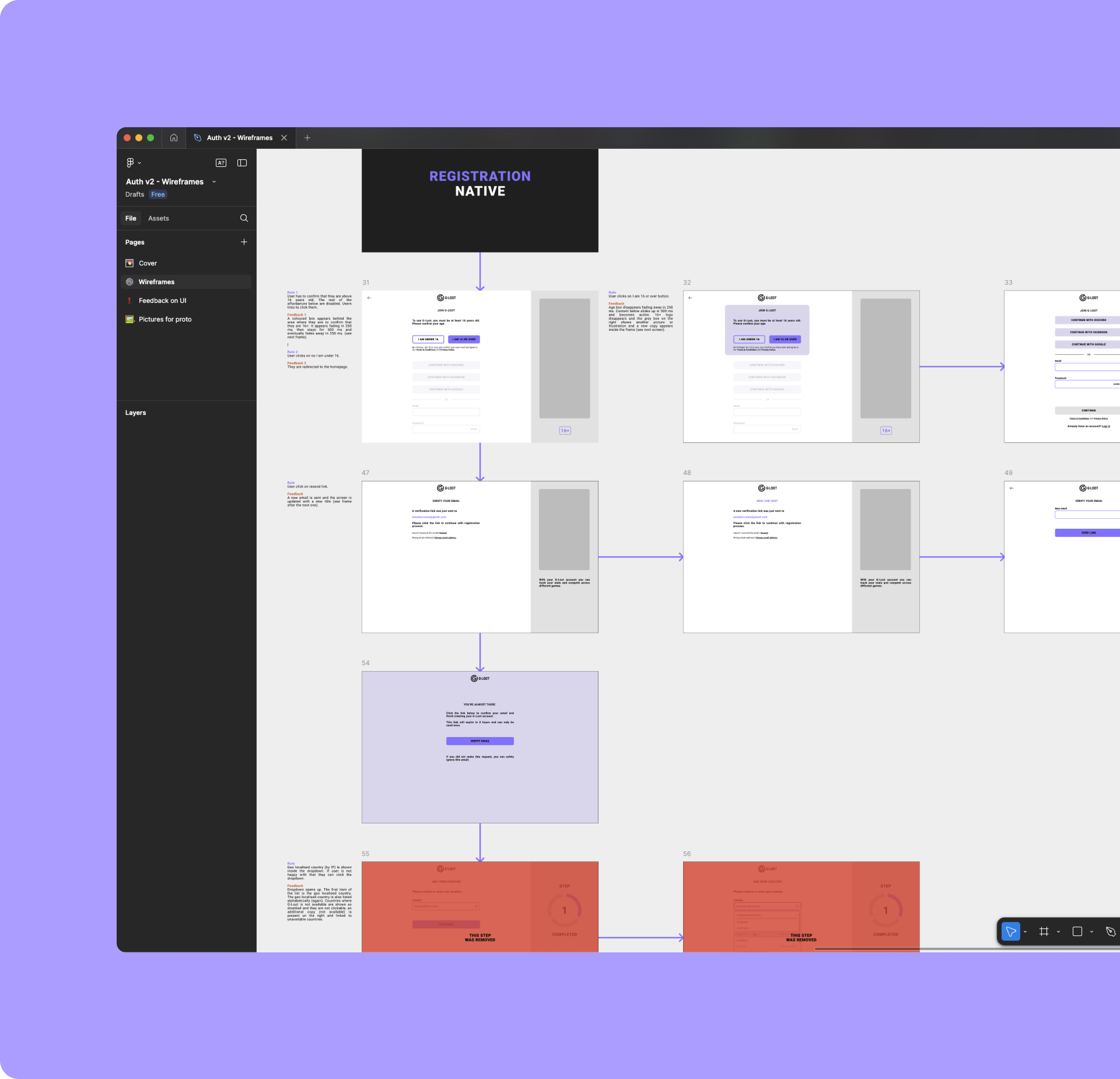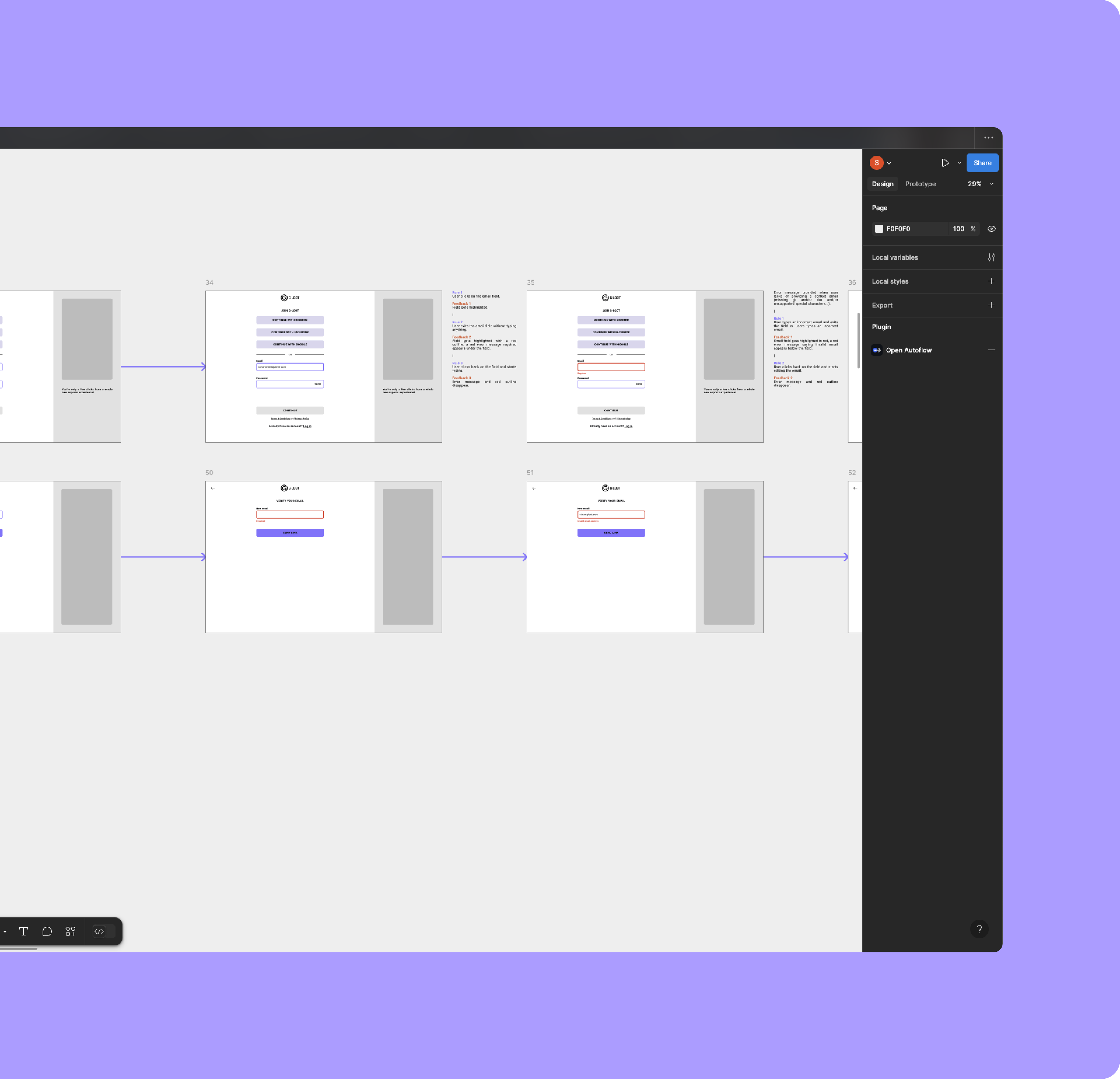Authentication
The project focused on redesigning the registration and login flow to enhance the user experience. The goal was to address usability pain points and improve conversion rates.
Research & analysis / UX / UI / Prototype
2022
2022
G-Loot, later rebranded as Stryda, was a Stockholm-based esports company specializing in stats tracking, player identity, and competitions. It permanently ceased operations in 2023.
New design

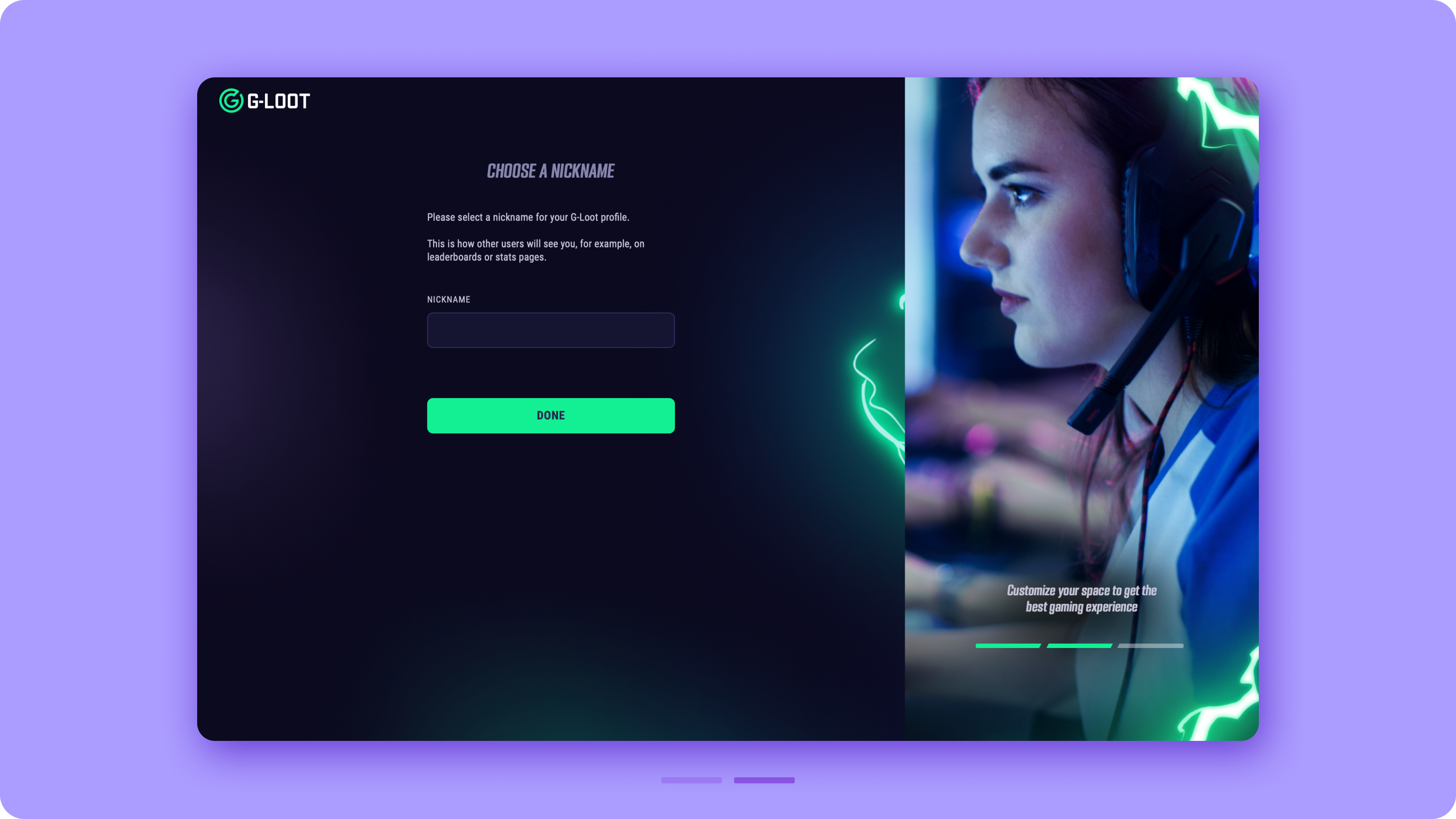
The problem :
Research findings showed that users were eager to land on the platform, understand the core loop, and start playing.
However, the previous registration flow had several issues that either slowed users down or, in some cases, prevented them from completing the registration or login process:
However, the previous registration flow had several issues that either slowed users down or, in some cases, prevented them from completing the registration or login process:
- Ineffective guidance: Many error messages were misplaced or conveyed misleading information. Additionally, key elements, such as password hints, were not properly highlighted.
-
Lack of social authentication: Approximately 50% of users preferred social authentication, with Discord being a popular choice among gamers.
-
Too many steps: The registration flow was too long, requiring users to go through excessive clicks and screens, making the process feel cumbersome.
-
Poor age verification placement: The 16+ age requirement (age gating) appeared too late in the process, just before email confirmation, after users had already filled out multiple fields. Additionally, it required a full date of birth, forcing users to select three dropdowns, which many found unnecessary and intrusive due to privacy concerns.
-
Technical issues: Research using Amplitude revealed backend problems that prevented users from receiving the email with the verification code.
-
Outdated interface: The registration flow did not align with the platform’s newly designed system, making it feel outdated.
Browse the gallery to explore the research findings on the previous flow


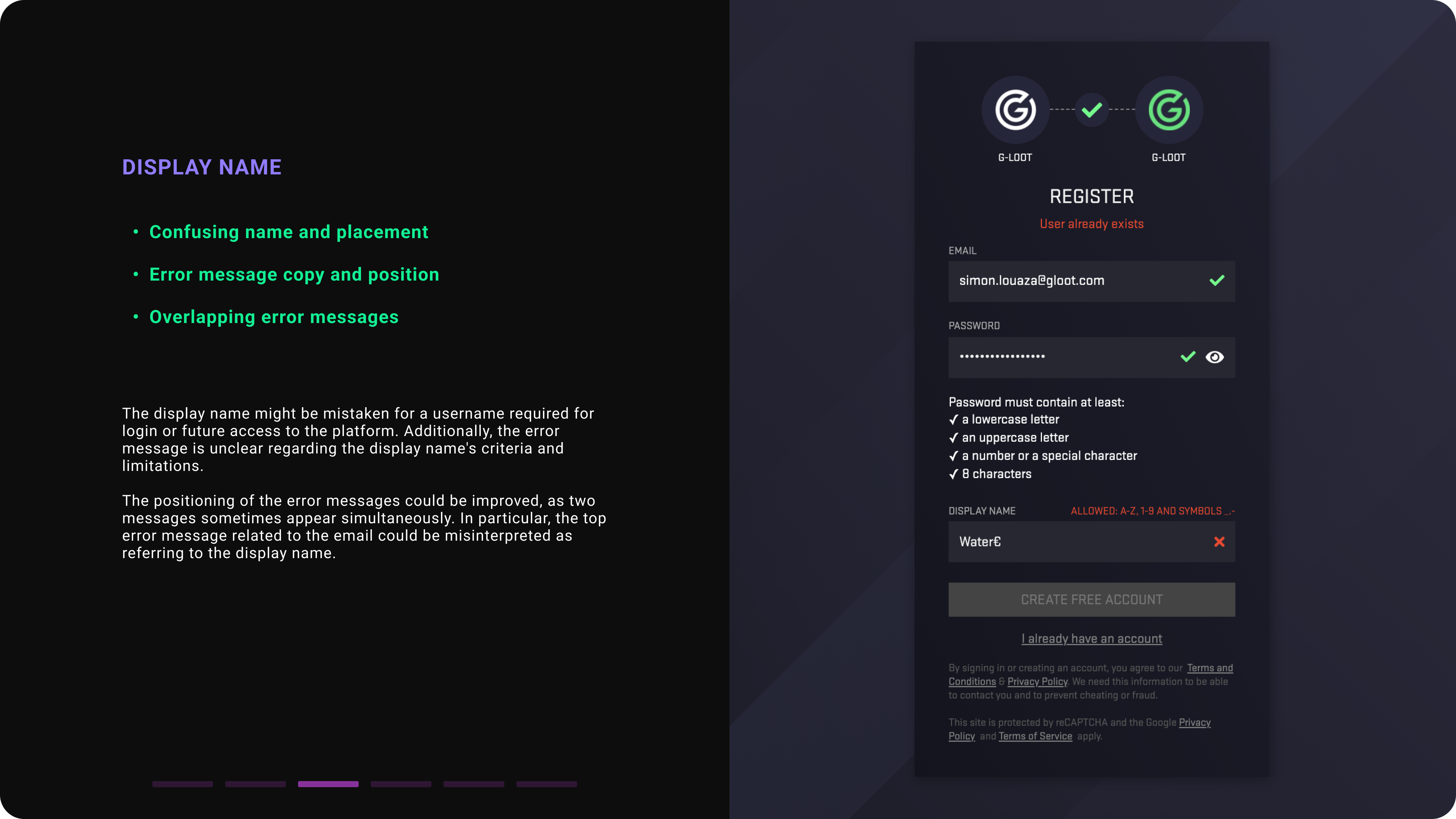
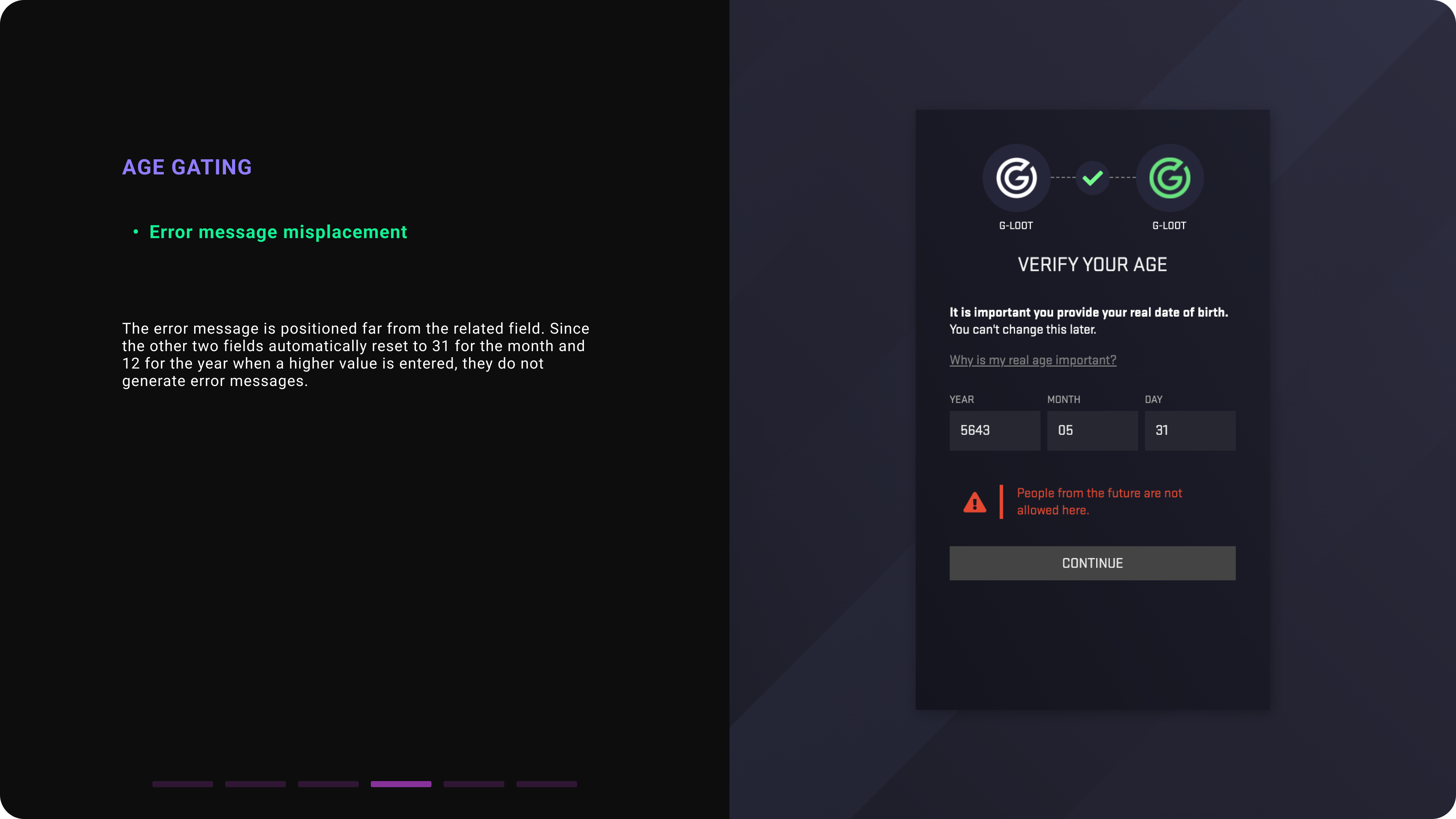


Watch the new flow and password hints below

The solution :
To better address user goals and pain points, the authentication flow was restructured for a more coherent experience.
- Improved age verification: The age-gating step was moved to the beginning of the registration flow to prevent unnecessary friction.
Instead of requiring a full date of birth, a simpler age verification method was introduced, where users confirm their age by selecting a button indicating whether they meet the required age or not.
-
Location handling: The location step was removed, as user location (mandatory for the gaming experience) is now automatically determined through IP geolocation.
-
Social authentication: Users can now choose social authentication for both registration and login.
-
Enhanced user guidance: A progress indicator now displays the number of steps remaining before completion. Password hints were fully redesigned to be interactive, offering better guidance with a new set of confirmation and error messages.
- Improved visual engagement: Visual elements and payoff messages were added to the right side of the interface to make the process more engaging and aligned with the company’s branding.
Redesign strategy



Research activity
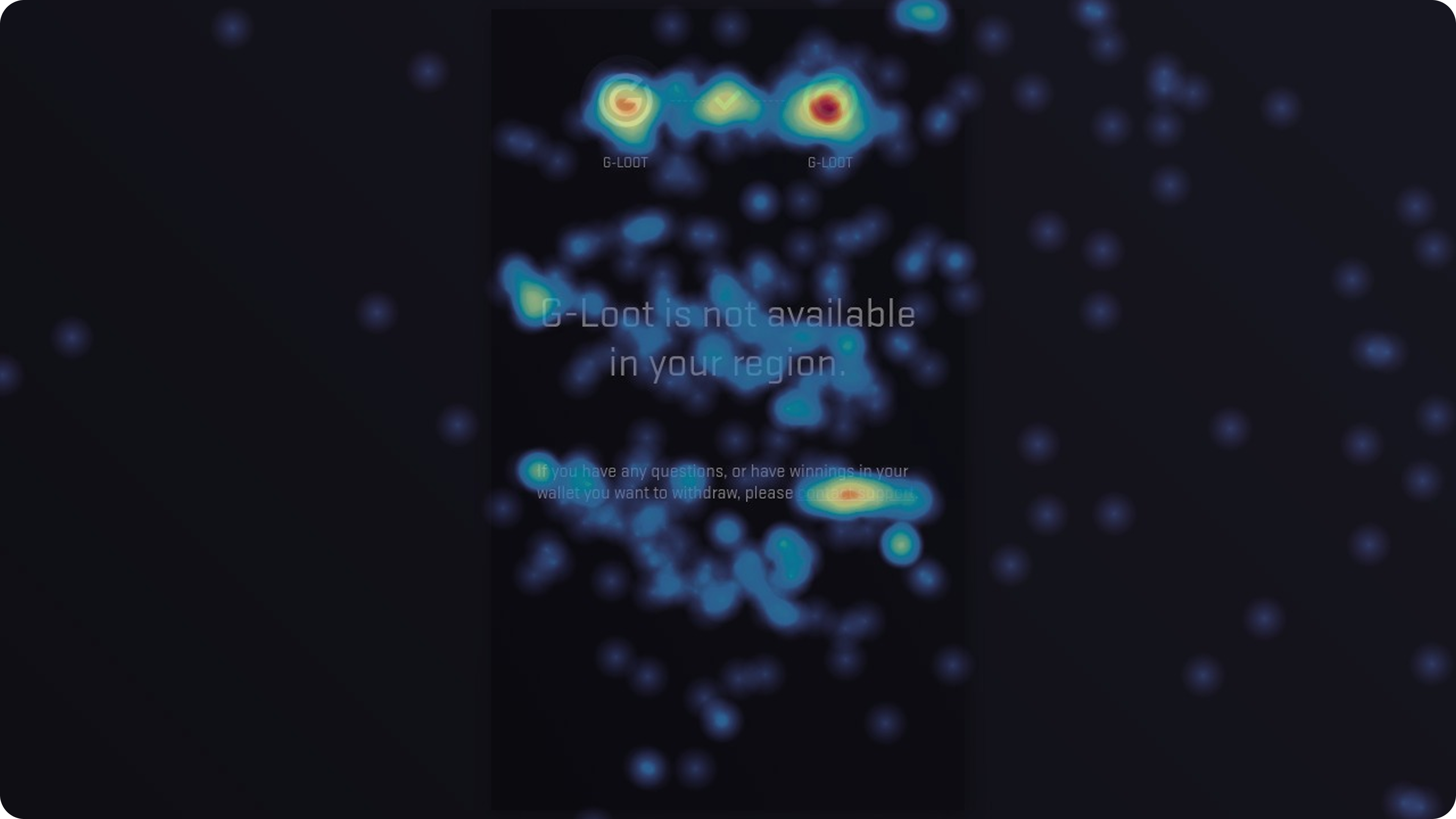
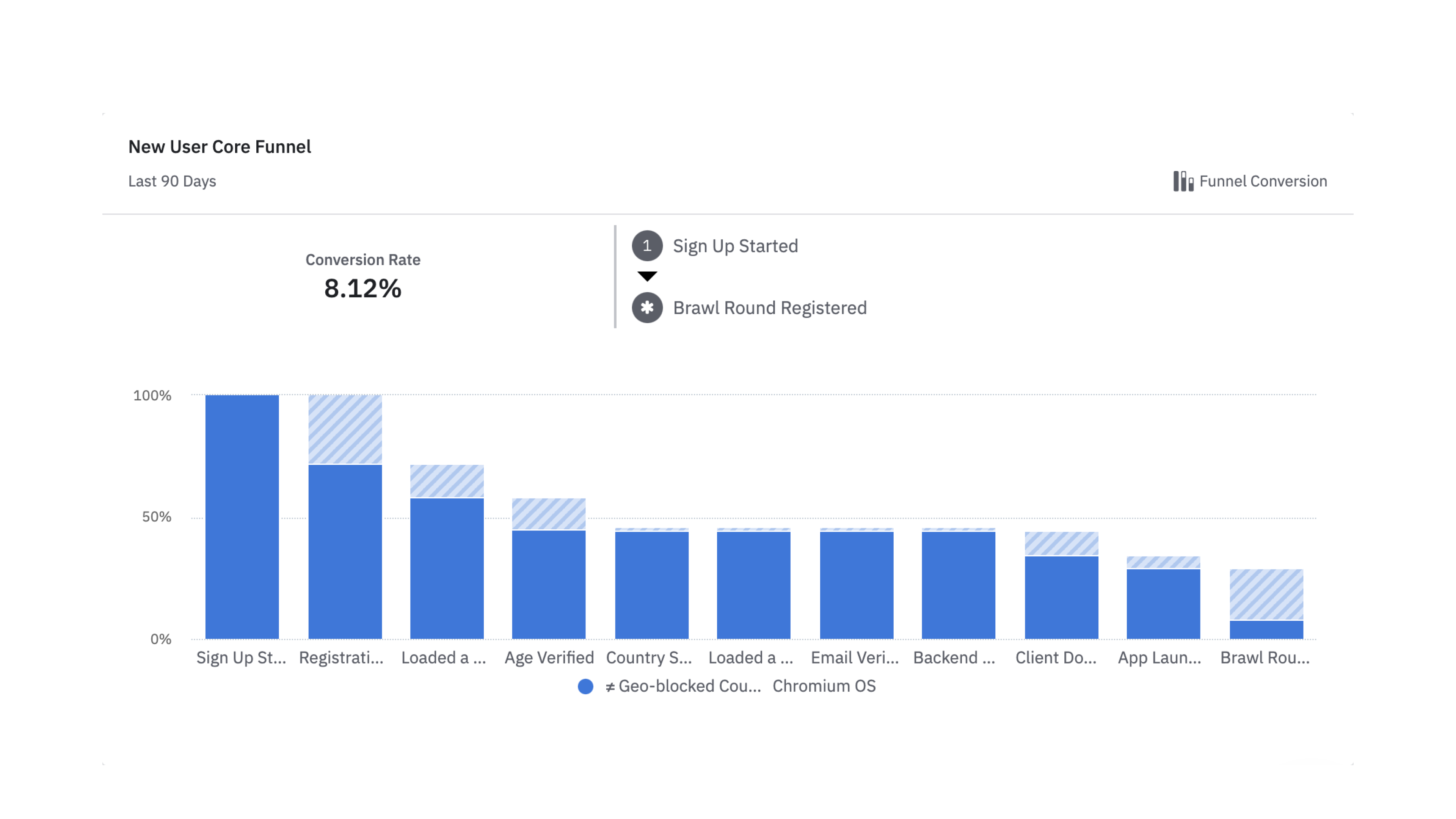
Browse the gallery to view wireframe samples
